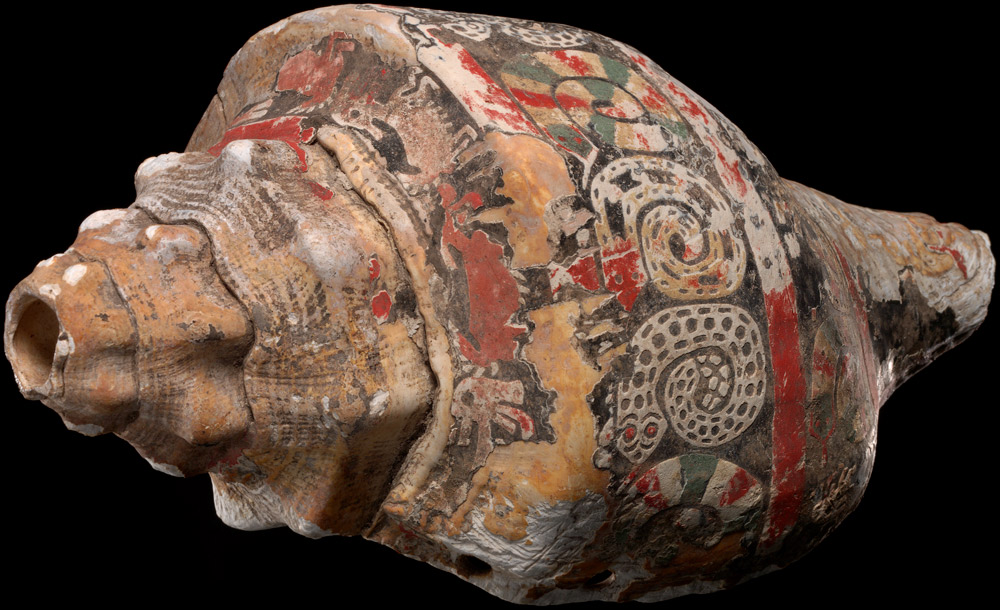
Chupícuaro shell trumpet
AD 300–900
Chupícuaro, Guanajuato State, Mexico
Shell, stucco, pigment
11 x 15 x 24.5 cm
https://americanindian.si.edu/exhibitions/infinityofnations/meso-carib/242892.html
The beautiful conch shell trumpet above was found in Mexico, and is estimated to be over 1,000 years old. At first glance this trumpet may catch your eye; it’s beauty and intricate designs. The fact that intrigues me is that this piece was found in western Mexico, though the conch that create the shell is indigenous to the Caribbean. Meaning that this shell was traded over thousands of miles, skipping over the Gulf of Mexico and hundreds of miles on land to be used and decorated in Western Mexico over one thousand years ago (when our native ancestors had no horses, motor driven boats, or cars at that time). This one fact, without including this artifacts wonderful stucco decorations, shows the importance of these shell trumpets in the ancient world.
Did you know a sea shell could be transformed into an beautiful instrument? The spiraling design not only provides a great example of the golden ratio and beauty of nature, but also traces back humanities history into our archaic roots.
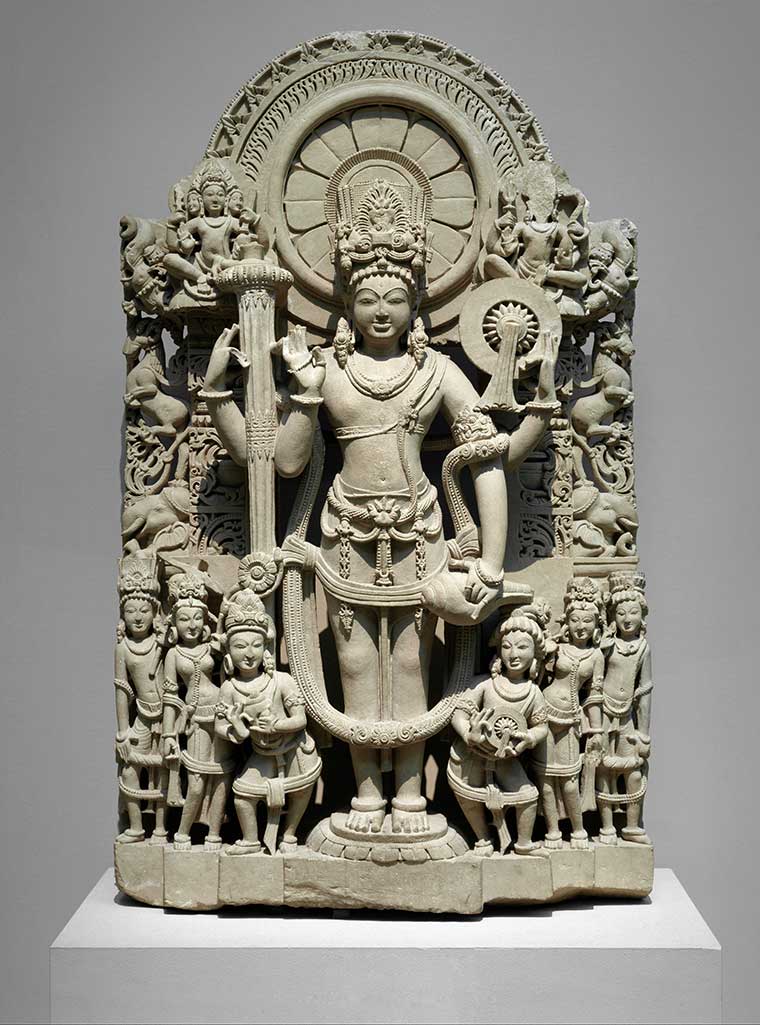
The god Vishnu is often depicted holding his usual attributes, which include a conch trumpet. Vishnu, 10th–11th century. India (Punjab). Sandstone, H. 43 1/2 in. (110.5 cm), W. 25 5/8 in. (65.1 cm), D. 10 in. (25.4 cm). The Metropolitan Museum of Art, New York, Rogers Fund, 1968 (68.46)
Shell trumpets have been found all over the globe dating as far back as 6,000 B.C., and have been utilized and honored in many ancient and modern cultures. The Aztec knew them as quiquiztli, the Japanese Samurai called them Horagai, the Maori of New Zealand call them Putatara; all of these shell trumpets have very little difference other than cultural and aesthetics. These fairly simple instruments provide a loud sound for a small device; making it easy to communicate over long distances with ease. This was integral to ancient cultures who were usually isolated by uninhabited distances, without the use of cell phones and the internet to communicate.
How are shell trumpets made?
The ability to create a shell trumpet with somewhat ease has contributed to the widespread use of these ancient instruments. We have found specimens of these trumpets older than 3,000 years that still can be played to this day.
How are these devices made?
- The easiest way to make a shell trumpet is to find, harvest, or buy a suitably sized shell, usually a conch 7-10″ inches long.
- Clean and soak in a bleach solution for at least one day.
- Once a suitable shell is found and cleaned, use a dremel or hacksaw to remove tip of the shell 3-4 spirals down and try to remove the proper size hole, and then smooth the edge with a dremel or sandpaper.
- Sometimes the shells have an additional hole from harvesting that will need to be filled with epoxy.
Check out the video below for a review of the process visually.
Cultural Significance of Shell Trumpets
As I mentioned above, many cultures around the world have utilized the various forms of shell trumpets. These trumpets come in many styles, are made from various large sea snails such as conch, and can have mouthpieces of many different designs or no mouthpiece at all.
Cross culturally these trumpets are used to initiate ceremonies, signal major events and celebrations, open weddings, or traditionally blown at certain times of the day such as sunset (really popular in Key West) or sunrise. The sound of shell trumpets usually cause increased alertness, and are hard to ignore even when coming from a distance. The sounds invoke some ancient call to listen, to become aware or more conscious, and to focus on the present. It’s expanding interior spiral forms are ideal proportions for the wind way to produce a strong and clear tone.
The various techniques of decorating these shells provide an wonderful insight into their importance in ancient cultures. Using anything from wood, stone and metal mouthpieces to carvings and plaster, or even rope wrapping techniques; the varied spectrum of decorative mediums are inspiring.
The Aztec knew them as quiquiztli, the Samurai called them horagai, the Maori call them Putatara; they are all shell trumpets with very little difference other than minor cultural and decorative nuances. Below we will review a few of the cultural differences for these shell trumpets across the globe.
Pre-Columbian Civilizations
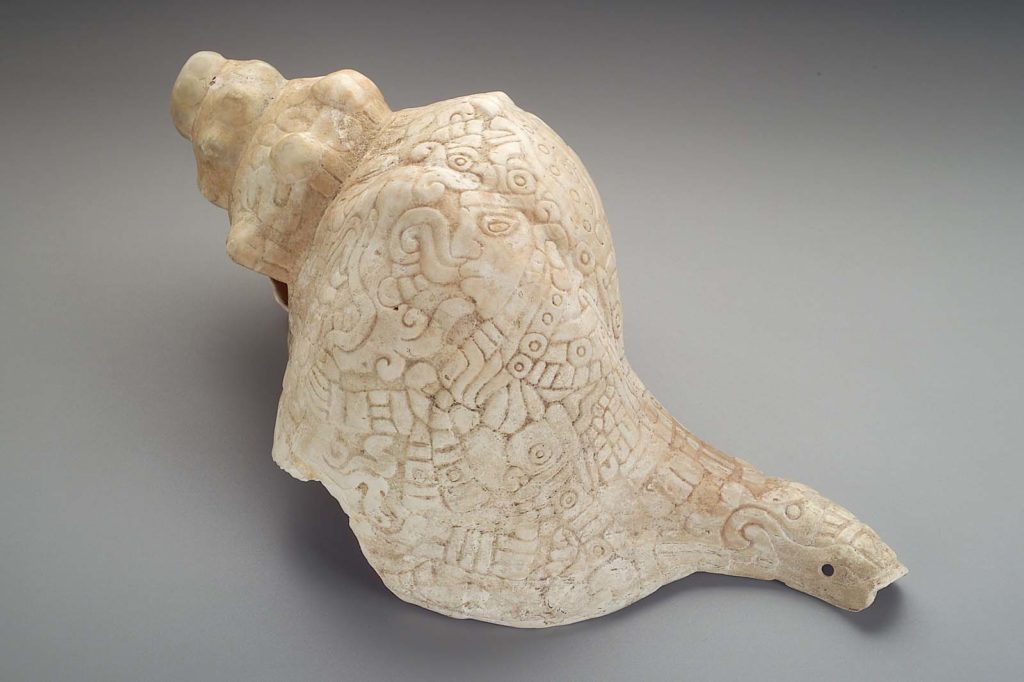
Conch shell trumpet
Aztec or Mixtec
Late Postclassic period
A.D. 1425–1520
Object Place: Mexico, Central or Southern Highlands
Dimensions
38.1 x 20 cm (15 x 7 7/8 in.)
https://www.mfa.org/collections/object/conch-shell-trumpet-36241
The Aztec of Mixtec conch trumpet above has some interesting carvings when you take a close look. Visibly one of the first images you see is of a human and what seems like smoke coming from his face. This smoke motif is common and is often thought of as an design to signify sound or spiritual energy. The whole motif helps express the powerful nature of this ceremonial object, and just how important these trumpets were to the people who made and used them.
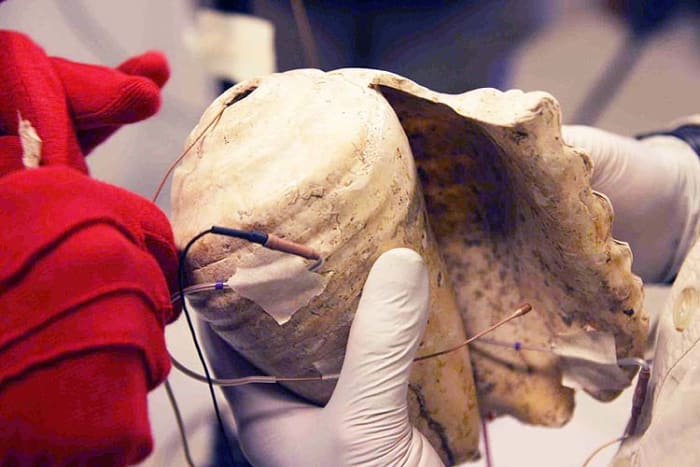
Before the Incas there was a culture we know very little about in the region, this culture we call Chavin. The Chavin populated the regions of Peru for around 2,00 years, before the Incas that the Spanish Conquistadors met and conquered in the area 500 years ago. Recent discoveries have shed light on the Chavin culture and their knowledge and usage of sound in sacred ceremonies.
Some of the structures and sacred monuments have been found to create some unique sound distortions depending on various instruments used. One chamber seemed to be created specifically for conch shell trumpets which they called pututus. Below is a quote and link from a great article about the recent discovery, there is also a great video explaining some of the discoveries related to shell trumpet.
Deep in the labyrinth stands the Lanzón, a 15-foot stone statue; and nearby is a 15-foot-long duct, open to a sunken plaza outdoors. The duct is tapered, and, according to Kolar, is “an amazing filter for exactly the sound frequencies of the pututus,” a sort of megaphone built of stone that broadcasts the shell trumpet, while excluding other frequencies. And, the duct lines up perfectly with the idol’s mouth. Perhaps thousands of years ago a priest would blow a powerful note on the pututu, and the awestruck crowd outside would receive wisdom from the gods.
From “The Sound of History: Mescaline, Music, and Terror” at Pacific Standard Website
https://psmag.com/social-justice/mescaline-music-terror-42603

The native people of the Caribbean region, the Taino, held a high status for what they called the guamo. Before any major ceremony or gathering the guamo was blown, each behike (medicine person or shaman) protected at least one sacred guamo in his collection. When the Spanish first arrived, they notated the importance of the shell trumpet to the Taino and other native people of the region. As commonly found, these instruments were used to signal entrance to a village, births, ceremonies, and communication in general. Each person carried at least a small shell trumpet, which was usually carried hanging from their waist. Many of these island cultures considered, and still consider, the sound of the shell trumpet to be the voices of the gods.
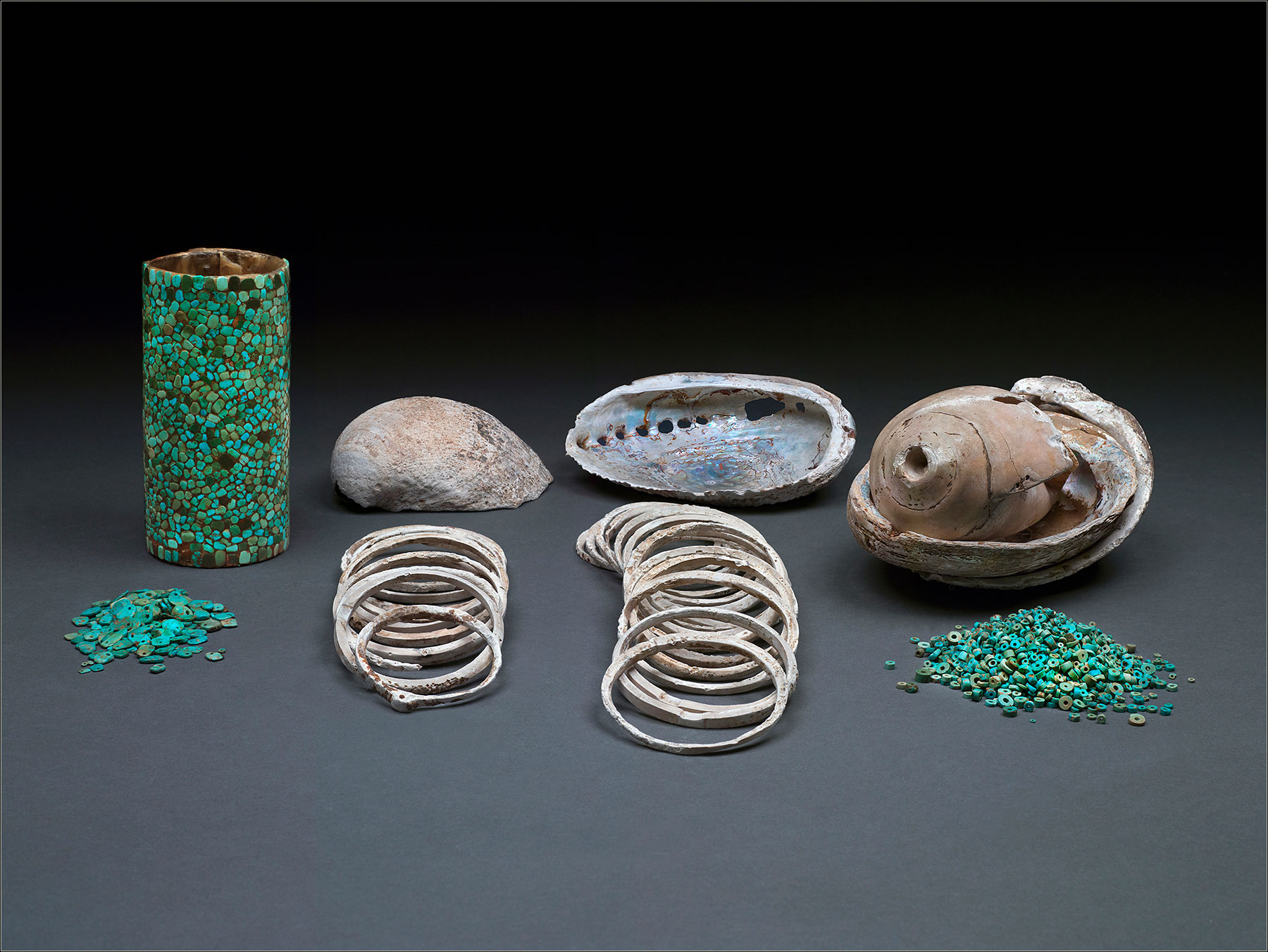
The richest burial in Pueblo Bonito included abalone shells, a conch shell trumpet, shell bracelets, turquoise jewelry and a wicker cylinder vessel covered with a turquoise mosaic. (Photo by Roderick Mickens, American Museum of Natural History)
Sourced from: https://news.virginia.edu/content/cutting-edge-dna-analysis-adds-new-insight-three-centuries-pueblo-history
In Chaco canyon, deep in the New Mexican desert, lies evidence of an advanced ancient pre-columbian culture. Within one of the many rooms we have found evidence of thousands of kilometers of trade reach, with items indigenous to places hundreds of kilometers away. One of the interesting items found in a matriarchal burial chamber was a conch shell trumpet with a turquoise mouthpiece. The conch being imported all the way from the Caribbean. Studies have found that a shell trumpet could be heard at least 1.5 km away, if blown in the main canyon area. Chaco canyon is theorized to be an ancient place of worship and spiritual education, with trade routes linking the site to the Caribbean, Central America, and the Midwestern & Pacific northwestern US.
Many Pre-Columbian cultures were animistic at their core, and saw every instrument as living beings. Animism is the perspective that everything has spirit, and can be viewed as “alive” to our modern cultures standards. These cultures saw the shell trumpet as a connection to the spirit world, and within each was a spirit. These spirits sometimes required certain things such as foods, incense, and other offerings. These perspectives are echoed in other ancient cultures, and similar views can be found by many other cultures mentioned in this article.
South Pacific

Conch Shell Trumpet (Davui)
Date: late 19th century
Geography: Fiji
Culture: Fijian
Dimensions: L.10 × W. 6 1/2 in. (25.4 × 16.5 cm)
Classification: Aerophone-Lip Vibrated-trumpet / trombone
Credit Line: The Crosby Brown Collection of Musical Instruments, 1889
Accession Number: 89.4.1823
https://www.metmuseum.org/art/collection/search/502422
In areas such as Fiji, in the South Pacific, called these instruments davui. This example above is from the western portion of the island of Viti Levu, whose inhabitants formerly created a distinctive variety of davui. A unique feature of Western Viti Levu shell trumpets is the presence of a small finger hole, bored near the mouth of the shell, which allowed the player to vary the pitch when playing, creating a rising and falling tone.
Virtually all other Pacific trumpets emit only a single note. In contrast to other Fijian conch shell trumpets, western Viti Levu davui were end-blown, with a blowing hole made by removing the apex of the shell, rather than side blown (using a hole made in the side of the instrument). They were also frequently decorated, as here, with elaborate rope-like tassels made from coconut husk fiber while those in other parts of Fiji were non-ornamented.
New Zealand- Maori
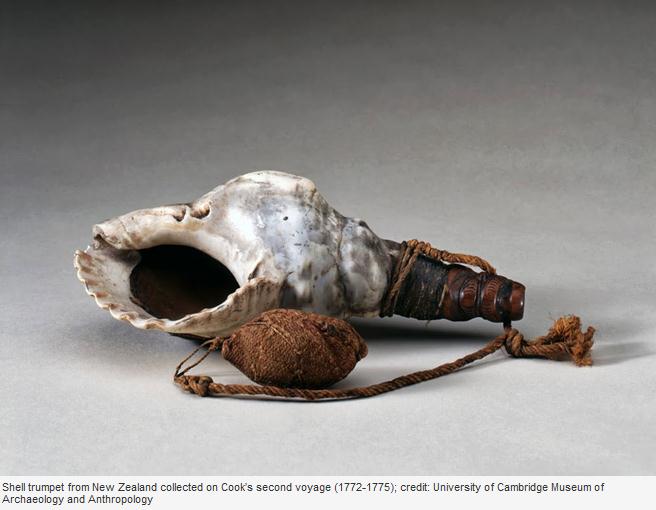
The pūtātara is the Māori version of the shell trumpet, an unique set of beliefs and design standards are still held in reverence within the Māori culture. It is usually made with a wooden mouthpiece and a bell made of a native conch or triton shells.
The decorative mouthpieces of the pūtātara are some of the most stunning of many of the various decorative methods of many other cultures. The carved designs in the wooden mouthpieces are usually very intricate and visibly display the essence of traditional Māori styling and design.
Māori legend says that when Tāne descended from the heavens carrying Te Kete ō Te Wānanga (the three baskets of knowledge) gifted from his father Ranginui, he left a pūtātara as a koha (gift). This story and several others show how this instrument has become an important foundation of Māori spiritual beliefs and practices. In Māori whakapapa, Tangaroa is the atua (spiritual entity) of the oceans and the fish are his children through his union with Hine Moana. Whakairo translates as carving or the work of Iro. Iro is a sea worm, or a child of Tangaroa that leaves carved patterns in pieces of driftwood. Therefore carving can be seen as a gift from Tangaroa.
Sourced from: http://www.jeremycloake.com/en/products/taonga_puoro/putatara/
Asia
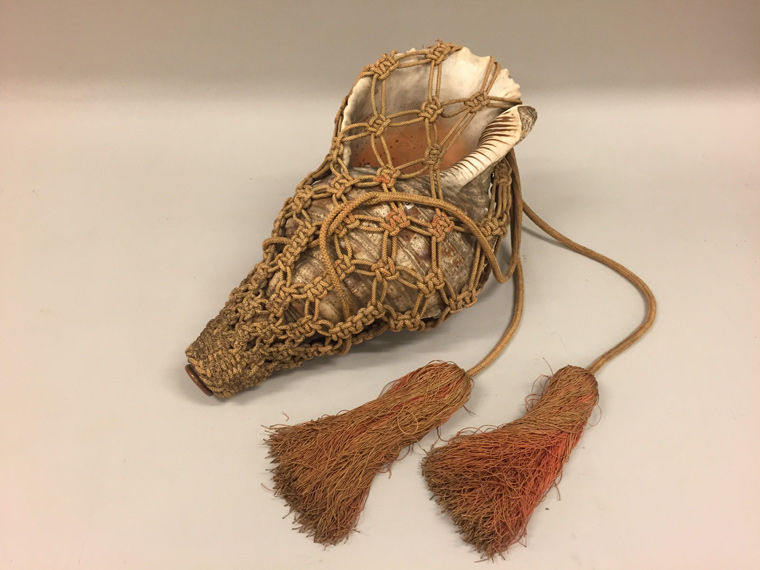
The horagai was used in Japan as a war trumpet. Horagai or rappakai, 19th century. Japan. Shell; triton, tritonis, H: 38.1 cm (15 in.); W: 15.2 cm ( 6 in.). The Metropolitan Museum of Art, New York, The Crosby Brown Collection of Musical Instruments, 1889 (89.4.93)
Horagai (or jinkai ) are the Japanese equivalent the the shell trumpet. Usually made from triton (similar to the Maori versions), these trumpets were customarily decorated with rope in some way. Sea Shell Trumpets have been used in Japan for hundreds of years. The numerous functions for shell trumpets in the Japanese culture are matched with as many names, as well.
These trumpets are fairly unusual when compared to other known variations. Horagai have wood or bronze mouthpieces that give them the ability to produce up to 3-5 pitches. This is unique aspect for the horagai provides additional communicative functions for the use of shell trumpets.
The samurai used the trumpets in war to signal and communicate, they called them jinkai or “war shell.” Yambushi warrior monks of Japan utilized the hora to communicate and for mantras.

Buddhism and Hinduism have used shell trumpets for certain rituals or within ceremony for at least 1,000 years. Tibetan shell trumpets are some of the most ornately designed versions we can find, often with intricate brass and metal embellishments and symbology.
Final Thoughts
The numerous names and styles of shell trumpets found across history and cultures is amazing. Even cultures hundreds of kilometers from the ocean seem to have found a reverence for these naturally sourced instruments. Whether ornately decorated with stucco, metal, or carvings; these instruments provided very similar traditional uses. Imagine the power of ancient shell trumpets as they echoed in the distant past. We can still find them in use today; for communication, sacred purposes, evoking certain deities or signaling spiritual ceremonies & religious rituals.

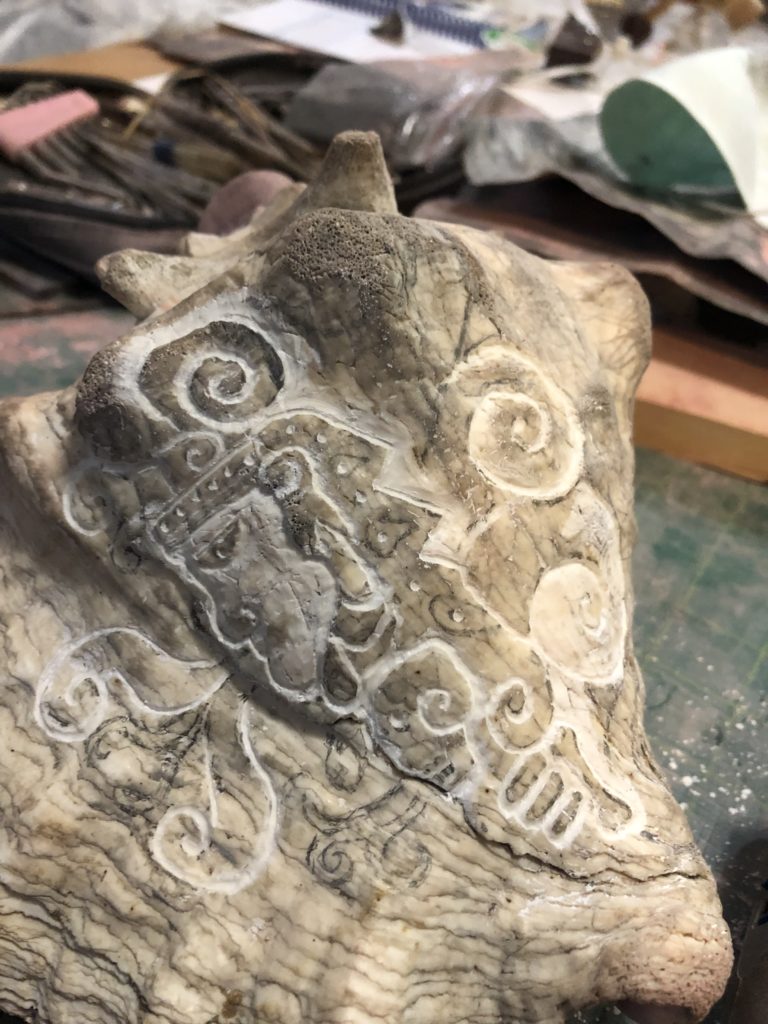
As I am working on my own sacred instruments and completing my own conch shell trumpet this season, I submerge myself in these past perspectives our ancestors viewed these powerful instruments in. If you’re interested in making your own shell trumpet and want to schedule your own instrument making immersion, feel free to reach out to me. I love to share my knowledge and techniques for creating your next ceremonial tool.
References:
“The Sound of History: Mescaline, Music, and Terror” – Chris Solomon, 2012
The Guamo Botutu (Fotutu) – Shell Trumpet – Evelyn Dye-Garcia, 2004
Archaeogenomic evidence reveals prehistoric matrilineal dynasty – 2017
Cutting-Edge DNA Analysis Adds New Insight to Three Centuries of Pueblo History –
Anne E. Bromley, 2017
https://en.wikipedia.org/wiki/P%C5%ABt%C4%81tara


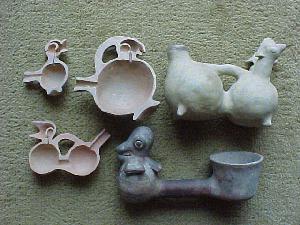
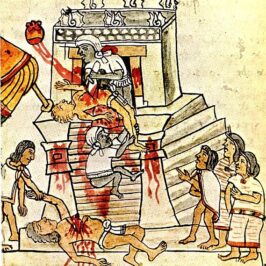
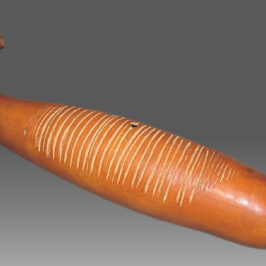
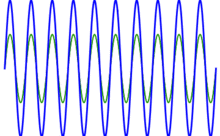
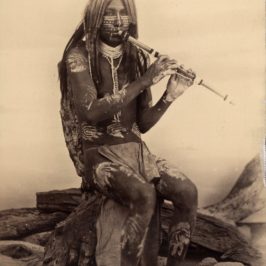
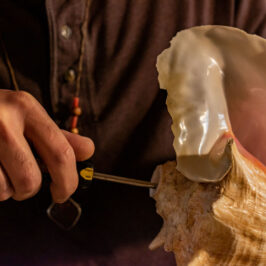
Archaic Roots ~ Making a Conch Shell Trumpet
[…] Spirals from the Past- Sea Shell Trumpets […]
Archaic Roots ~ The mysterious pre-Columbian mouth whistle (shepherd's whistle)
[…] codex books. On this page it shows various other instruments such as teponaztli and huehuetl drums, conch shell trumpets and flutes, so he estimates that the image on the top left is one of these noise generators, and […]